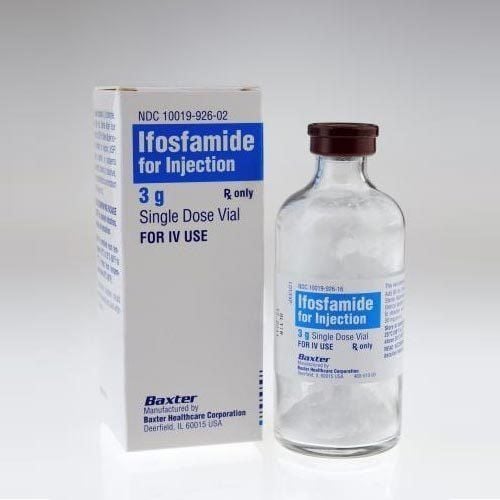This is an automatically translated article.
Testicular cancer is a cancer that occurs in a man's testicles - the area that makes the hormone testosterone and sperm. Although it is a rare cancer compared to many other organs, testicular cancer is extremely common in young men.
1. What is testicular cancer?
The testicles are located in the male reproductive system, located in the scrotum and just below the penis. This is the organ responsible for the production of the male hormone testosterone - related to sex drive - and sperm - related to male fertility.Just like most other organs, testicles are also capable of developing malignancies and forming testicular cancer.
Testicular cancer has a lower incidence than many other cancers, however, for men between the ages of 15 and 35, it is one of the most common.
2. Why does testicular cancer happen?
The vast majority of testicular cancers originate from the proliferation of sperm-producing germ cells. However, the specific mechanism that causes out-of-control growth of spermatogenic germ cells has not been elucidated and much research is still being conducted to find out the exact cause.3. Testicular cancer classification
According to scientists, at present, testicular cancer is divided into two main types:
Non-seminomas: usually occurs in men at a young age and has a rapid spread. Seminomas: occur more often in older men, often have a much slower spread than non-seminomas.

Ung thư tinh hoàn được thành một số loại khác nhau
4. What are the signs of testicular cancer?
The most common sign when you have testicular cancer is swelling or a lot of nodules in the testicles, but it does not cause pain. The size of these nodules may be the same or larger than a pea.
In addition, signs of testicular cancer also include:
Certain changes in sensation in the testicle area, eg feeling firmer, structural changes... The scrotum feels heavy. and uncomfortable. Aching or dull pain in the testicles, scrotum, groin to lower abdomen. Foreign fluid suddenly accumulates inside the scrotum...
5. Who is at high risk for testicular cancer?
Issues related to race, age and certain other health conditions can increase the risk of testicular cancer, namely:
The disease can occur at any age from infancy to elderly people, but occurs mainly in men between the ages of 15 and 35. Caucasian men tend to have the disease more often. Conditions that affect the development and functioning of the testicles all increase the risk of the disease such as scrotal defect, undescended testicle... Family history: if there is a close relative like father or brother in the family If a boy has testicular cancer, you are also more likely to get the disease. So you need to check more often.

Ung thư tinh hoàn có thể gặp ở mọi lứa tuổi
6. How many stages does testicular cancer develop?
Stages of testicular cancer are determined based on the size and spread of the tumor, including:
Stage 0: This is the stage where cancer cells are found in small tubes. - called the semi-coniferous tube - is located inside the testicle, which is difficult to detect through normal symptoms. Stage 1: The tumor has grown outside of the testicle and nearby areas, but has not spread to lymph nodes or to further sites in the body. Stage 2: Testicular cancer cells have spread to lymph nodes located in the patient's abdomen. Stage 3: The cancer has spread to many parts of the body other than the testicle, including the liver, bones, lungs, or even the brain.
7. Diagnosis - how is testicular cancer treated?
Testicular cancer when detected early can increase the success rate of treatment. So, as soon as you have signs of pain, swelling or nodules on one or both testicles, go to the hospital to screen and check early for the possibility of this type of cancer.
If the examination and examination is delayed, there is a high chance that the cancer will spread to many other parts of the body, making treatment difficult with a much lower success rate.
7.1. Diagnosis of testicular cancer In the vast majority of cases, men who feel the growth of a tumor in the testicle area will see a doctor for a specific examination. If the doctor suspects this is testicular cancer, several tests of the testicle area will be done, including:
Ultrasound. Blood tests . Computed tomography (CT) or X-rays from multiple angles, then combine the results to create comprehensive and detailed images of the abdomen, chest, pelvis, and testicles for staging tumor, metastasis... These tests can look for testicular cancer or hormone/protein levels... can change due to the disease.
For some other types of cancer, a cell biopsy may be done to accurately evaluate a tumor as malignant. However, for testicles, this test can damage the testicle and increase the chance of metastasis if it is cancerous.

Siêu âm ung thư tinh hoàn giúp bác sĩ chẩn đoán bệnh lý chính xác hơn
7.2.2. Chemotherapy and radiation therapy for testicular cancer After surgery, a number of other prevention / treatment methods will be carried out in case the tumor has metastasized, including:
Chemotherapy: using different types of chemotherapy powerful substance to kill cancer cells. Radiation therapy: uses high-energy beams to kill cancer cells. It can be said that testicular cancer is a common disease in men, causing many consequences if not detected and treated early. When you find an abnormality, you need to see a doctor soon to perform an examination.
Currently, Vinmec International General Hospital is one of the leading prestigious hospitals in the country using the most modern generations of color ultrasound machines today in examining and treating patients. One of them is GE Healthcarecar's Logig E9 ultrasound machine with full options, HD resolution probes for clear images, accurate assessment of lesions. In addition, a team of experienced doctors and nurses will greatly assist in diagnosing and early detection of abnormal signs of the body in order to provide timely treatment for testicular cancer. .
Please dial HOTLINE for more information or register for an appointment HERE. Download MyVinmec app to make appointments faster and to manage your bookings easily.
Reference source: webmd












